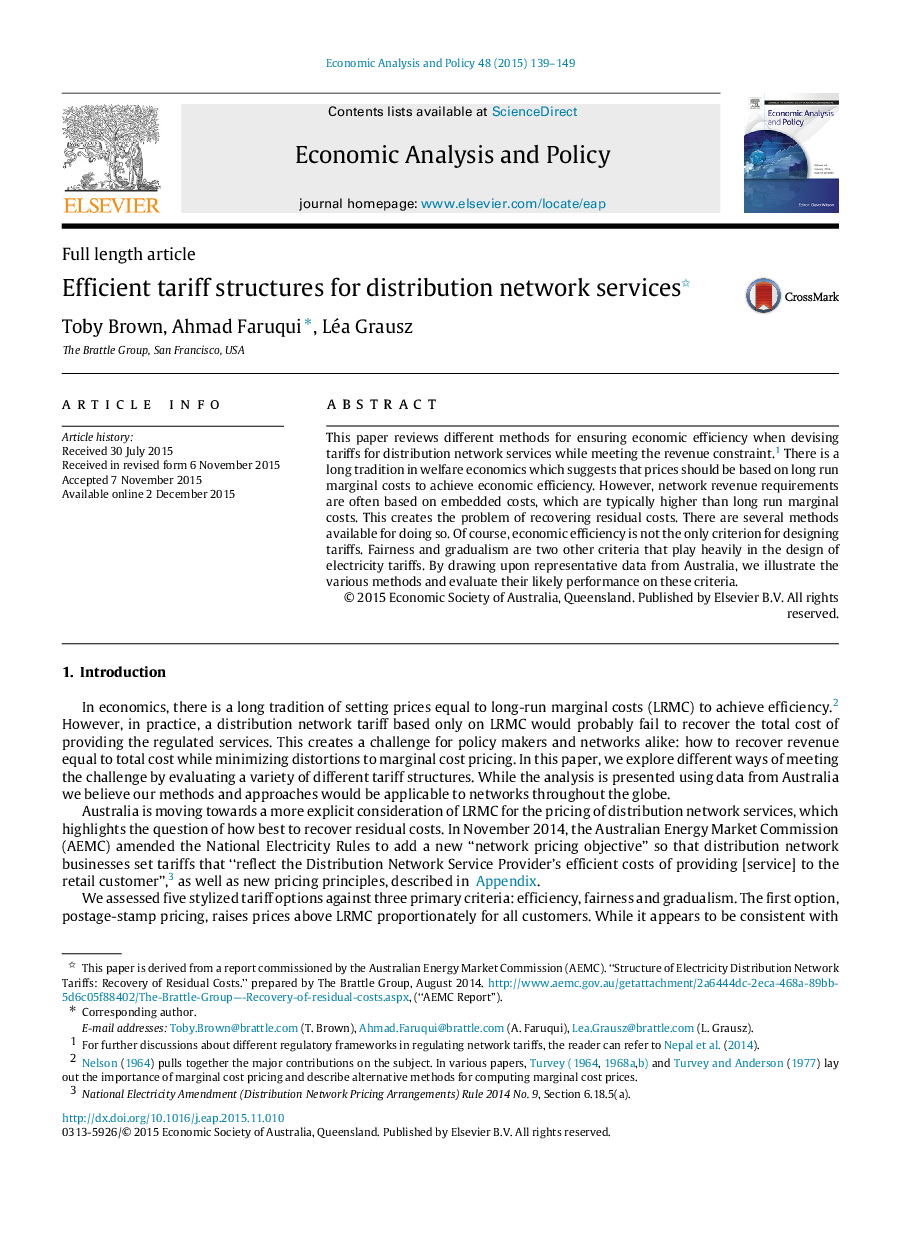| Article ID | Journal | Published Year | Pages | File Type |
|---|---|---|---|---|
| 5052748 | Economic Analysis and Policy | 2015 | 11 Pages |
Abstract
This paper reviews different methods for ensuring economic efficiency when devising tariffs for distribution network services while meeting the revenue constraint.1 There is a long tradition in welfare economics which suggests that prices should be based on long run marginal costs to achieve economic efficiency. However, network revenue requirements are often based on embedded costs, which are typically higher than long run marginal costs. This creates the problem of recovering residual costs. There are several methods available for doing so. Of course, economic efficiency is not the only criterion for designing tariffs. Fairness and gradualism are two other criteria that play heavily in the design of electricity tariffs. By drawing upon representative data from Australia, we illustrate the various methods and evaluate their likely performance on these criteria.
Related Topics
Social Sciences and Humanities
Economics, Econometrics and Finance
Economics and Econometrics
Authors
Toby Brown, Ahmad Faruqui, Léa Grausz,
